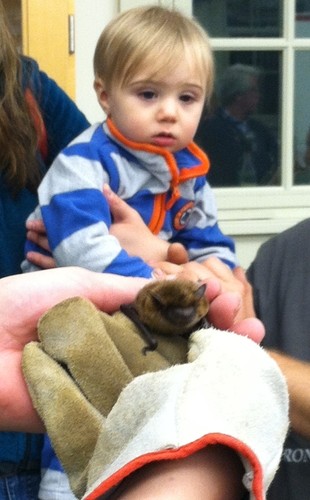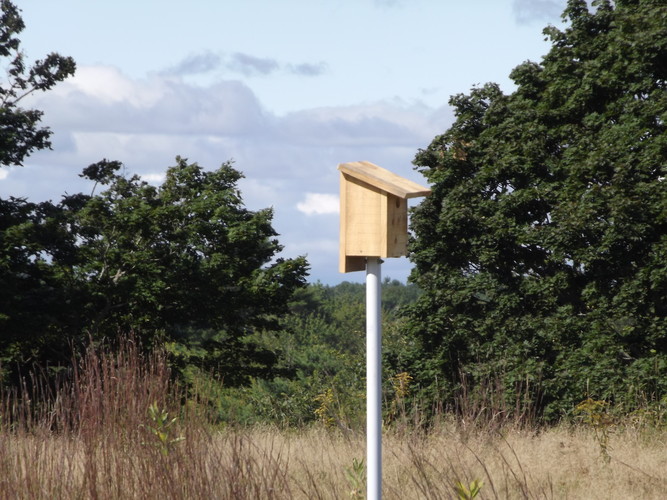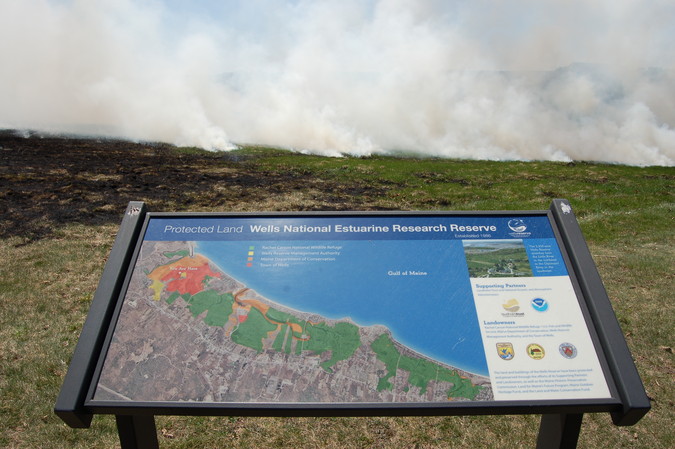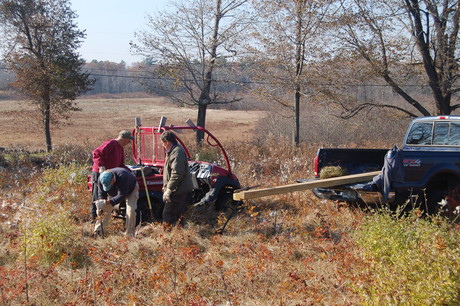The Wrack
The Wrack is the Wells Reserve blog, our collective logbook on the web.
The Wrack is the Wells Reserve blog, our collective logbook on the web.
This past Saturday evening, over 20 community members participated in the "Bats: Friends of the Evening Sky" program offered in partnership with the Center for Wildlife. We all learned about the many myths surrounding bats and the real truths (they don't fly into human hair, there are only 3 species of vampire bats among the over 1,200 species of bats worldwide, and vampire bats do not live in the United States—they live in tropical climates and prey primarily on livestock). 
We were amazed to learn, too, that Maine's insectivorous bats eat 1,000 mosquitoes in a single night! The next time a mosquito bites you, think of all the mosquito control bats provide us!
 Thanks to the aspiring Eagle Scouts of Troop 356, the Wells Reserve now has new real estate options for its nesting avian neighbors! This group of generous and hard-working scouts crafted and installed five new bluebird houses at the Reserve this month, and we have already had at least one bluebird fly in for a closer look. An additional ten birdhouses were donated by the Troop, to be used for a community birdhouse workshop at the Reserve in the spring of 2014. Many thanks to Troop 356 for your kind gift!
Thanks to the aspiring Eagle Scouts of Troop 356, the Wells Reserve now has new real estate options for its nesting avian neighbors! This group of generous and hard-working scouts crafted and installed five new bluebird houses at the Reserve this month, and we have already had at least one bluebird fly in for a closer look. An additional ten birdhouses were donated by the Troop, to be used for a community birdhouse workshop at the Reserve in the spring of 2014. Many thanks to Troop 356 for your kind gift!
 Periodic controlled burns are an excellent tool for strengthening grassland habitat. Once upon a time wild fires occurred regularly, but today it's not sensible to let fires rage across the landscape. Without an occasional burn, though, New England grasslands gradually succeed to shrublands and then to forests.
Periodic controlled burns are an excellent tool for strengthening grassland habitat. Once upon a time wild fires occurred regularly, but today it's not sensible to let fires rage across the landscape. Without an occasional burn, though, New England grasslands gradually succeed to shrublands and then to forests.
Determine the presence or absence of diadromous rainbow smelt and appropriate habitat within the restored area of Shoreys Brook
March and April 2012
Charles, Mark, and Frank installed seven bat houses within four of the Reserve's fields today, in an effort to provide habitat for the local population of these insectivorous flying mammals who eat up to 1,000 insects per hour. Below are pictures taken during one of the installations. We are hoping that bats will move in to this new real estate in the spring!
